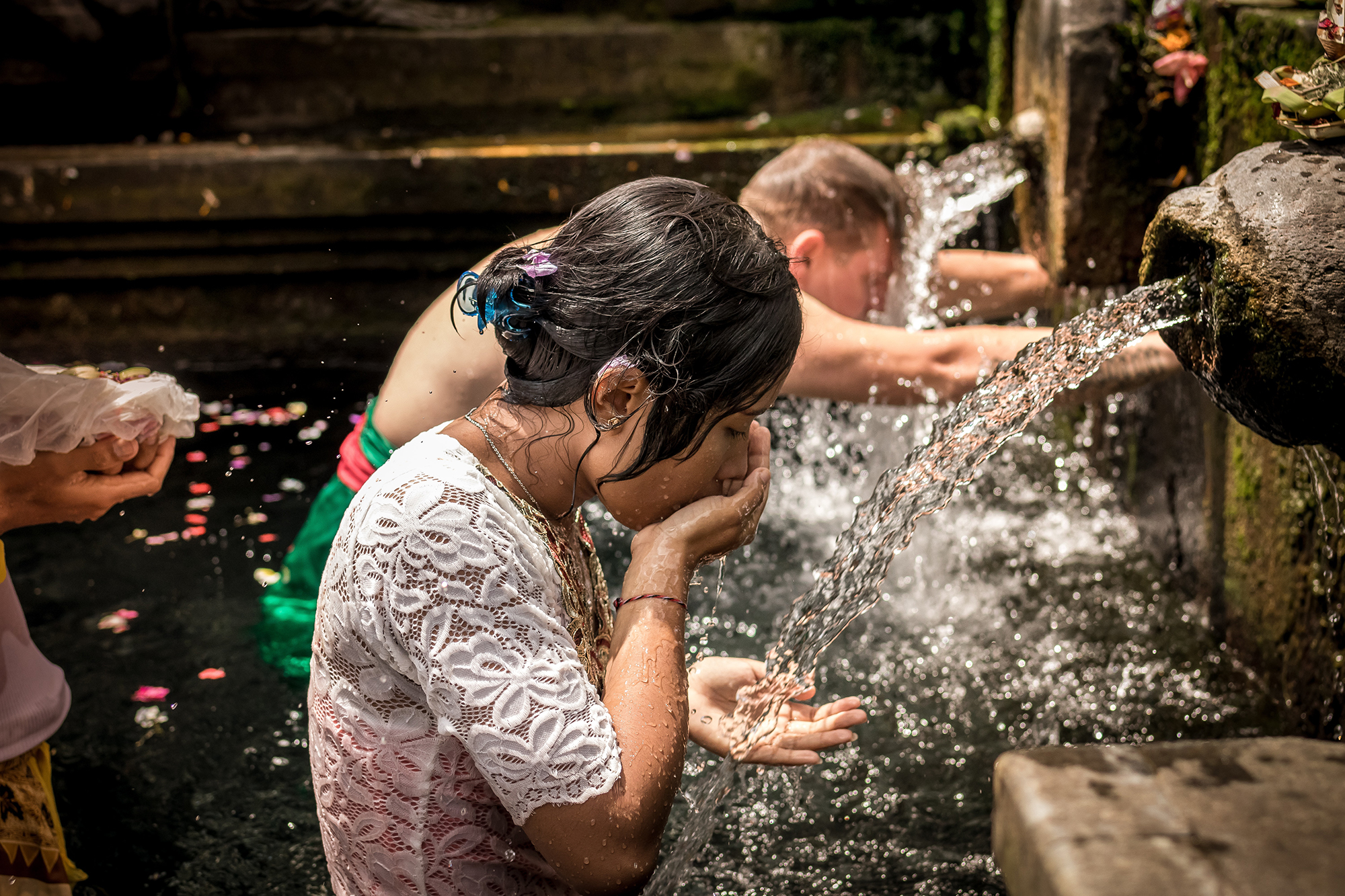Tourism is the largest contributor to the Balinese economy but it also brings its own problems - trash, depleting resources and water management are high on the list.
Bali Tribun recently reported on a public conversation at the Bintang Bali Resort in Kuta between the Center for Groundwater and Geology of the Environment, the Geological Agency and the Ministry of Energy and Mineral Resources. The discussion was around groundwater reserves and sustainable tourism and the message wasn't very positive.
Subak system
Historically, Bali's relationship with water goes back more than 1,000-years and is inextricably linked with growing rice. Water management through the practice of Subak has been the lifeblood of the island's culture and its communities since the 9th-Century, according to UNESCO.
 Ancient Subak water management systems have changed the geography of Bali. Image by Monica Volpin on Pixabay.
Ancient Subak water management systems have changed the geography of Bali. Image by Monica Volpin on Pixabay.
The Subak system is an egalitarian association of farmers who collectively manage a shared water source under the philosophy of Tri Hita Karana. The Bali Villages go as far as to claim "in the 11th-Century individual Subak systems became so massive that they became man made watersheds, and began to change the geography of Bali making it into the landscape we know and love today."
Tri Hita Karana
The philosophy of Tri Hita Karana addresses the need to maintain harmony and balance between humans, nature and the spiritual realms and in this sense "reshaping the environment contributed to the ecosystem, rather than ruining it," say The Bali Villages.
But these days it seems harmony, balance and egalitarianism are not as important as occupancies and profits, especially in Denpasar and Badung.
 Water temples and water palaces are still places of worship in Bali. Image by Artem Beliaikin on Pexels.
Water temples and water palaces are still places of worship in Bali. Image by Artem Beliaikin on Pexels.
Groundwater vulnerable zone
At the recent Bintang Bali Resort forum, Head of the Groundwater and Geology Center for the Environmental Geology Agency, Andiani suggested the most recent groundwater mapping in Bali's southern and tourist-heavy areas revealed a vulnerable zone. He went on to explain that a vulnerable zone "shows a decrease in groundwater levels of between 40 to 60-percent, or the occurrence of sea water intrusion due to groundwater uptake."
The ASEAN Post believe this is a tourism-induced water crisis. "Tourism contributes toward 80-percent of Bali's economy and about 85-percent of it is in the hands of non-Balinese investors. It has been quoted that as much as 65-percent of the island's groundwater is poured into the tourism industry, drying up 260-out of more than 400-Balinese rivers. Groundwater over-extraction has lowered the island's water table by some 60-percent, risking irreversible saltwater intrusion."
 Massive crater lakes in Bali's volcanic mountain ranges have been revered for centuries as holy places. Image by MadeByNastia on Pixabay.
Massive crater lakes in Bali's volcanic mountain ranges have been revered for centuries as holy places. Image by MadeByNastia on Pixabay.
Gapura Bali reported in 2018 "the importance of protecting Bali's groundwater supplies cannot be overstated as it not only effects tourism and property developments but also every Balinese. This is why Save Bali Groundwater was the theme for Bali Earth Day, and why IDEP and Politeknik Negeri Bali are calling for support from civic and tourism industry leaders to ensure the success of the Bali Water Protection Programme.
Cooperation and sustainability
Bali's water problems are not new. "As early as 2009, research by the Japan International Cooperation Agency (JICA) warned that the southern part of the island would suffer from a water deficit by 2015. It projected a deficit of up to 2,500-litres per second. Other studies carried out by local scholars yielded similar results," reported The Jakarta Post in 2017.
The big question for tourism industry and property stakeholders in Bali has to be focused on greater cooperation and sustainability. To best manage such a precious resource as water it could pay to learn from the past and use the ancient Subak system as a relevant model for Bali to better manage its natural resources, not only water, and become a more sustainable destination for the island's future generations.
Sources: Tribun Bali, Gapura Bali, The Bali Villages, UNESCO, IDEP and Politeknik Negeri Bali
Similar to this:
Bali Earth Day 2018 focuses on groundwater preservation
Bali leads the way and officially bans single-use plastic bags, straws and polystyrene across the island
Plans afoot to charge tourists for waste management




 Ancient Subak water management systems have changed the geography of Bali. Image by Monica Volpin on Pixabay.
Ancient Subak water management systems have changed the geography of Bali. Image by Monica Volpin on Pixabay. Water temples and water palaces are still places of worship in Bali. Image by Artem Beliaikin on Pexels.
Water temples and water palaces are still places of worship in Bali. Image by Artem Beliaikin on Pexels. Massive crater lakes in Bali's volcanic mountain ranges have been revered for centuries as holy places. Image by MadeByNastia on Pixabay.
Massive crater lakes in Bali's volcanic mountain ranges have been revered for centuries as holy places. Image by MadeByNastia on Pixabay.


